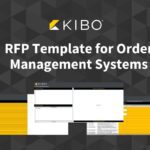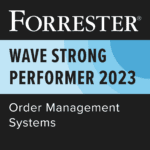Today’s customer requires greater agility than ever before — they want faster, cheaper, and more accurate delivery options. Expectations for delivery times continue to shrink. According to McKinsey & Co., 90% of consumers view 2-3 day shipping as a baseline expectation. At the same time, costs continue to increase. There has been a four times increase in hourly wage growth compared to prepandemic levels.
In response, leading companies are replacing their traditional order fulfillment methods with flexible fulfillment strategies.
This innovative approach has gained immense popularity in recent years due to its ability to enhance customer satisfaction, boost sales, and optimize inventory management.
In this article, we’ll break down the role of flexible fulfillment in omnichannel commerce and the customer shopping journey, and what it takes to achieve flexible fulfillment from an operational perspective.
What is Flexible Fulfillment in Omnichannel Commerce?
Flexible fulfillment plays a key role in omnichannel commerce, as consumers have come to expect multiple fulfillment options and locations. At its core, flexible fulfillment is a strategic approach that seamlessly integrates various channels, such as brick-and-mortar stores, ecommerce sites, and even mobile apps, to offer customers a truly synchronized shopping experience.
It’s all about providing consumers with the convenience and flexibility to choose how, when, and where they want to receive their orders, be it through in-store pickup, curbside delivery, same-day shipping, or any other preferred method.
This strategy typically requires a modern order management system that can manage complex inventory and omnichannel distribution models and has extensible fulfillment capabilities. By implementing flexible fulfillment strategies, retailers can better meet the evolving needs and expectations of customers and remain competitive in the marketplace.
With flexible fulfillment, businesses can leverage their entire network of resources, from physical stores to warehouses, to fulfill orders efficiently and cost-effectively. Moreover, it empowers customers with more control over their shopping journey, enabling them to switch between channels effortlessly while enjoying consistent pricing and product availability.
In today’s competitive retail landscape, flexible fulfillment has emerged as a game-changer, allowing businesses to stay agile and responsive to ever-evolving consumer preferences and expectations.
Improving the Shopping Journey With Flexible Fulfillment
Historically, fulfillment was simply thought of as a means to deliver products to the customer. But it’s quickly becoming a critical role in the omnichannel shopping journey pre-, during, and post-purchase. Many popular fulfillment strategies are driving the need for expanding the role of fulfillment in the buying journey:
Buy Online, Pick-Up In Store (BOPIS) or Click and Collect
BOPIS allows shoppers to search for and buy items online based on their local inventory availability and pick up the order at their chosen location. BOPIS offers customers the convenience of online shopping with the added benefit of being able to avoid shipping fees and wait times. While BOPIS is growing in popularity in the B2C space, B2B distributors are also implementing BOPIS strategies to enable buyers to pick up orders at local brand locations.
For example, after implementing BOPIS, ULTA saw an increase in trip frequency and higher average order value — BOPIS now accounts for 25% of their eCommerce sales. BOPIS can also help drive online traffic – after Kibo’s client Bi-Mart launched their BOPIS program, the retailer saw an increase in website traffic and memberships.
This strategy also benefits retailers as it can increase foot traffic to their physical store locations and potentially lead to additional in-store purchases. BOPIS involves a seamless integration between online and in-store inventory management systems, allowing customers to easily check product availability and purchase items for pick-up.
Last-Mile Delivery
Last-mile delivery refers to the final step in the process of delivering a product to a customer’s doorstep. It involves the transportation of goods from a transportation hub or warehouse to the final destination.
This type of delivery is often considered the most important part of the delivery process, as it is the last interaction a customer has with a company before receiving their purchase. It can also be the most challenging, as it requires navigating complex logistics, traffic, and other obstacles to ensure that the delivery is made on time and in good condition.
When done right, last-mile can significantly help reduce costs — a study found that companies have been able to offset the increase in labor and rent costs with last-mile delivery by as much as 20%.
Curbside Pick-Up
Curbside is similar to BOPIS, with the exception that the shopper does not have to go into the store to pick up their online order. Typically, retailers will have reserved parking spots at stores that fulfill curbside orders.
Ship-to-Home, Store, or Locker
In these scenarios, the order is shipped from a warehouse or distribution center to the customer’s home, chosen store location, or a secure, self-service locker. For example, Abercrombie & Fitch recently expanded pickup locations for eCommerce shoppers to broaden its fulfillment capabilities. Shoppers can choose from over 12,000 locations, such as Walgreens, Office Depot, and FedEx, to pick up their online order.
Vendor Drop Ship
In this scenario, when a customer places an order with the retailer, the retailer then places an order with the vendor or supplier, who then ships the product directly to the customer.
Store-to-Store Transfer
This involves moving products from one store to another to fulfill an online order for store pick-up.
The above fulfillment strategies are designed to drive online sales, increase in-store foot traffic, and maximize conversions. To effectively implement these strategies, businesses need to incorporate fulfillment data earlier in the shopping journey (read: before checkout).
Why Incorporate Fulfillment Data Early in the Shopping Journey
Fulfillment data like accurate local store availability, delivery times, and shipping costs on the search results page and product detail page allows the customer to understand the total cost and timeline of their order prior to checkout.
Fulfillment data can also help manage customer expectations and reduce the likelihood of dissatisfaction or frustration caused by unexpected delays or costs. Additionally, providing fulfillment data earlier in the shopping journey can help retailers stand out from competitors by offering a more transparent and convenient shopping experience.
By providing detailed fulfillment data from the outset, retailers can build trust with customers and encourage them to make a purchase. Overall, incorporating fulfillment data earlier in the shopping journey is essential to creating a positive customer experience and improving overall satisfaction.
The Operational Side of an Effective Flexible Fulfillment Strategy
What the customer doesn’t see when they choose BOPIS or 2-day shipping is the complex operation workflows and processes that power those fulfillment options. All the above fulfillment strategies require an order management system that can optimize order sourcing, order routing, and fulfillment at pick, pack, and ship.
Optimizing Order Sourcing and Order Routing
Optimizing order souring and routing will help you preserve order value and product margin, reduce labor and shopping costs, and maintain appropriate total cost to serve. Retailers, distributors, and manufacturers that use Kibo’s order extensibility gain flexibility in source and routing.
Flexibility in Sourcing Strategies
Having sourcing flexibility can help retailers to respond quickly to market trends and shifts in demand, reduce supply chain risks, and optimize their cost structures. For example, a retailer may choose to source products based on nearest location during peak season to reduce shipping time or switch locations based on major weather events. They can also choose to source products based on factors like labor costs.
Leveraging a flexible sourcing strategy can help you manage and meet customer expectations while streamlining operations. For example, you can throttle sourcing from stores by order volume to avoid overwhelming a location with fulfillment. Or you can use geographic proximity and order splitting to source from the location closest to the delivery address to meet same-day delivery promises.
Flexibility in Routing Strategies
Flexible routing refers to the ability of a company to dynamically route orders to different fulfillment centers or stores based on various factors such as inventory levels, distance, and shipping speed. This can help retailers, distributors, and manufacturers to optimize their supply chain operations and meet customer demand more efficiently.
In fact, a study found that optimized order routing can reduce delivery costs from 10-30%.
For example, if a customer orders a product that is out of stock in their local store, a retailer with flexible order routing capabilities may choose to fulfill the order from a different store or a centralized fulfillment center that has the product in stock. This can help improve fulfillment times, fulfillment rate, and reduce shipping costs.
Flexible order routing can also be used to optimize inventory levels across different stores or warehouses. For example, if a retailer has excess inventory of a particular product in one location but is experiencing high demand for that product in another location, they can use flexible order routing to redirect orders to the location with excess inventory.
Optimizing Fulfillment at Pick, Pack, & Ship
By optimizing fulfillment at pick, pack, & ship, you can improve operational efficiencies, lower costs, and drive customer satisfaction.
Business Process Management for Fulfillment Workflows
Business Process Management (BPM) for fulfillment workflows refers to the practice of using technology and process automation to optimize the various steps involved in fulfilling customer orders, from order receipt to delivery. BPM for fulfillment workflows can help retailers to improve efficiency, reduce errors, and enhance the customer experience.
Here are some examples of BPM practices for fulfillment workflows:
- Order tracking: Track orders through every step of the fulfillment process, from order receipt to delivery, to help improve visibility and reduce the risk of errors.
- Warehouse management: Improve efficiency and reduce costs by optimize warehouse operations, such as inventory management, order picking, and packing.
- Shipping and delivery: Automate shipping and delivery processes, such as carrier selection, label printing, and delivery tracking, improve delivery times.
- Returns management: Manage returns and exchanges, including processing returns, issuing refunds or exchanges, and updating inventory levels.
- Customer communication: Automate customer communication, such as order confirmation emails, shipping notifications, and delivery updates to reduce the workload on customer service teams.
Overall, BPM for fulfillment workflows can help retailers to optimize their supply chain operations and provide a better customer experience by streamlining processes, reducing errors, and improving visibility.
Customizing the User Interface (UI) for Fulfillers
By tailoring the interface to the specific needs and workflows of the staff, retailers, distribution centers, and warehouses can optimize fulfillment operations and provide a better customer experience.
The first step in customizing the UI is to understand the needs and workflows for those that will be using the system. Based on the needs and workflows identified, define the specific customizations required. This may include changes to the layout or functionality.
Example:
Home Hardware, a Canadian home improvement and furniture retailer, uses Kibo Order Management to customize the fulfiller UI for each store location based on their fulfillment capabilities. By customizing the UI for each location, Home Hardware can improve efficiency, reduce errors, and enhance the user experience for store associates.
Pre-Defined Fulfillment Substitutions
Pre-defined fulfillment substitutions refer to a pre-defined list of alternative products that can be substituted for an out-of-stock item when fulfilling a customer’s order. These substitutions are predetermined and selected by the retailer, typically based on factors such as product category, price, and customer preferences. This ensures a merchant can protect the value of the order when a substitution has to take place.
For example, if a customer orders a specific brand of hand sanitizer that is out of stock, the retailer may substitute it with another brand of sanitizer that is similar in price, features, and customer ratings. Or if a fulfiller finds an item is damaged, they can replace it with a similar, non-damaged item.
Pre-defined fulfillment substitutions can help retailers to maintain high levels of customer loyalty by ensuring that orders are fulfilled in a timely manner, even if certain items are temporarily out of stock. A study from Auburn University found that consumers who purchase an item online for BOPIS are more likely to be satisfied with substitutions for out-of-stock products when the item is a staple.
In addition to improving customer satisfaction, pre-defined fulfillment substitutions can also help to reduce inventory costs by reducing the need for excess inventory and ensuring that all products are in constant demand. This can help to optimize supply chain operations and improve overall business performance.
Example:
Zwilling, a German knife maker, uses Kibo’s Substitutions capability to pre-define substitutable products. If they generate more sales than they can fulfill for a specific SKU, they can substitute it for a higher quality product to avoid loss of sales and improve customer satisfaction.
Wave Picking Speed
Wave picking speed is a measure of how quickly a warehouse or distribution center can pick and fulfill a batch of orders using wave picking, which is a method of order picking that involves grouping orders into waves based on factors such as delivery time, shipping location, or product type. Wave picking involves picking multiple orders at once, rather than picking one order at a time, which can help to reduce travel time and improve efficiency.
For example, if a distribution center receives an order wave consisting of 100 orders that need to be picked and fulfilled within 4 hours, the wave picking speed would be the rate at which the distribution center can complete the picking and fulfillment process for all 100 orders within the specified timeframe.
Example:
Boscov’s, a family-owned department store in the US, uses Kibo’s intuitive fulfiller UI for store wave picking. By wave-picking at the same time they re-stock at night for ship from store to home orders, they ensure they meet shipping SLAs.
Why Kibo for Extensible Order Routing
Kibo’s Extensible Order Routing gives business users the autonomy to extend custom attributes without needing IT or vendor help and the flexibility to align order routing with their unique organizational goals and supply chain operations. By fine-tuning order routing rules, businesses can meet specific fulfillment cost savings goals and reduce overall cost to serve.
Out-of-the-box, Kibo Extensible Order Routing comes with filters for order routing rules and powerful order routing logic with flexibility in setting up rules aligned with business needs. Users can order set custom attributes at the product, location, customer, and order level without IT involvement.
Examples of Custom Attributes:
- Product: Order is routed to a fulfillment location that has special packaging for perishable or fragile items.
- Order: Order is routed to fulfillment locations by order type like “sales order” or service purchased like “assembly” or “gift wrap.”
- Location: Order is fulfilled based on location’s “cost to fulfill” or equipment needed to fulfill, like a two-man forklift.
- Customer: If a VIP or loyal customer places an order, you can route the order to a location that has special packaging for this customer type.
The COVID-19 pandemic accelerated evolving consumer buying trends and forced businesses to rethink their fulfillment strategies. As consumer trends continue to change frequently, companies need a flexible fulfillment strategy to meet customer expectations, control costs, and stay ahead of the competition.
If you’d like to learn more about Kibo Order Management, register for a 15-minute demo.

Free RFP Template for Order Management Systems

Complimentary Copy of The Forrester Wave: Order Management Systems, Q2 2023

Kibo is now an official member of the MACH Alliance

